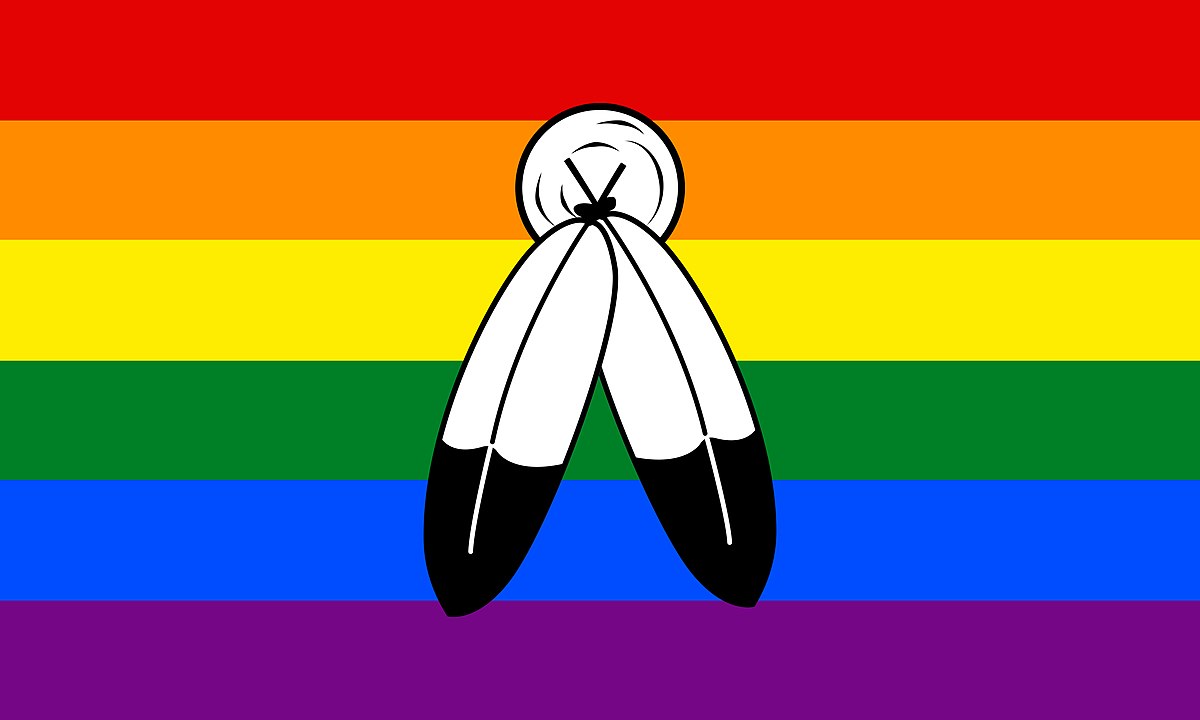Emerging Issues, Personal Stories
It's up to us: Taking action to prevent violence against two-spirit and Indigiqueer people
December 11, 2022
BY ANUSHKA KHANNA

A common Two-Spirit (2S) flag, consisting of two black-and-white feathers over the six-stripe rainbow flag.
In October 2022, I attended a webinar on gender-based violence against two-spirit/Indigiqueer people organized by the Learning Network. When I received an email about the webinar, I knew instantly that I had to join this session to learn more about a topic relatively new to me. I also tried to intentionally create space for unlearning to happen by questioning and rethinking some of the ideas that I hold.
Dr. Percy Lezard (they/them/theirs) spoke at the webinar about gender-based violence from the perspective of people who are Indigenous and gender diverse or two-spirited. They helped me understand more about the harms colonization causes Indigiqueer and two-spirit people — and made me think critically about societal ideas and what we’ve come to think of as a “normal” way of being and acting.
Here are just a few of the learnings I came away from the webinar with:
- We need to pay more attention to history, and that includes looking at the harms that colonization has caused (and continues to cause) Indigenous communities. Settlers brought ideas about the unacceptability of relationships that weren’t heterosexual. Long before settlers came to these lands, Indigenous communities honoured gender identities beyond male and female, identities that were hidden or disappeared due to European settlers’ arrival. Because of colonization, two-spirit and Indigiqueer folks lost the space to express who they were and to be accepted by their communities. They lost the roles they traditionally held in their communities.
- Intersectionality is a big word. Essentially, it means that we all have unique selves with overlapping social identities. Some aspects of those identities give us advantages, while others can disadvantage us. The webinar taught me that the experiences of oppression of two-spirit and gender- and sexually diverse Indigenous people are different from the Indigenous people who are heterosexual. These different experiences exist because of how people (dis)regard identities considered outside the societal norm. This calls for a more critical analysis of who we are, how we view things, and what needs to change.
- I also learned it’s not enough just to gain knowledge about Indigenous communities, their histories and their experiences. We must also use that knowledge to inspire further learning. There’s a plethora of resources around us – and it’s on us to seek out those resources and continue learning. Some resources are mentioned at the end of this blog to help you get started.
- The Missing and Murdered Indigenous Women, Girls, and 2SLGBTQQIA+ People National Action Plan recommends actions people can take to stop gender-based violence in Indigenous communities. We mustread, understand, and push those in power to act upon those recommendations.
- Finally, I learned that my social position influences my biases. We need to understand that we form biases when negative stereotypes about people influence us. By reflecting on how we’ve learned to think about groups like two-spirit and Indigiqueer people, we can question what we’ve been taught, unlearn biases, and form new, more inclusive ways of thinking.
Overt and covert racism and anti-2SLGBTQQIA+ ideas have impacted the lives of Indigenous people in Canada and continue to do so. We need to do better. We need to educate ourselves and take action to create a space where there is respect and where everyone feels safe.
Reading recommendations

